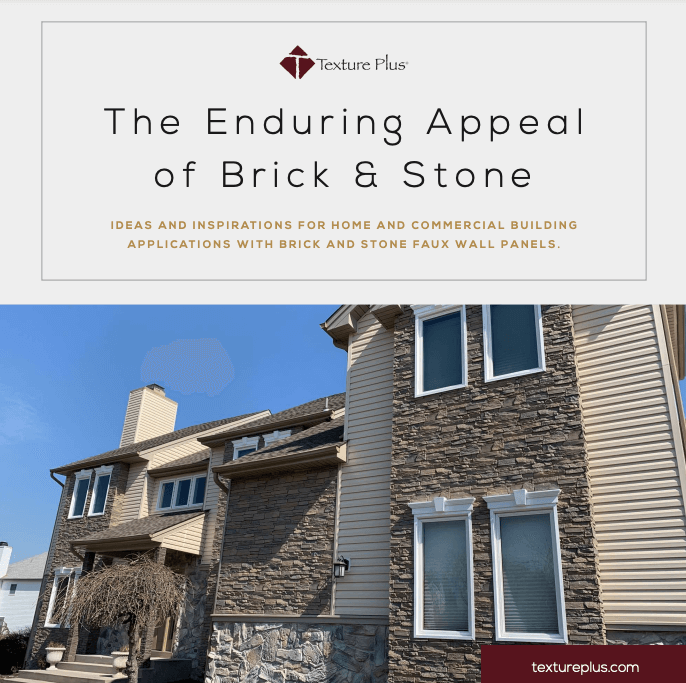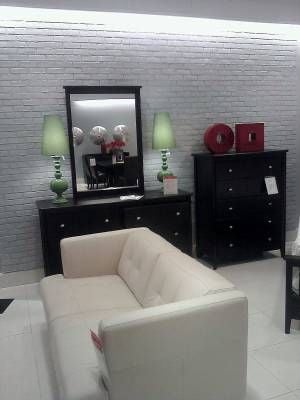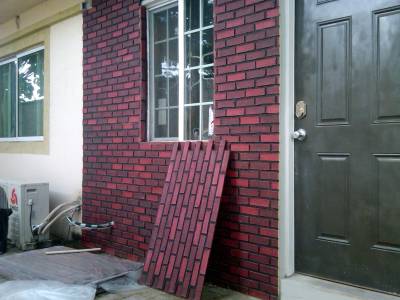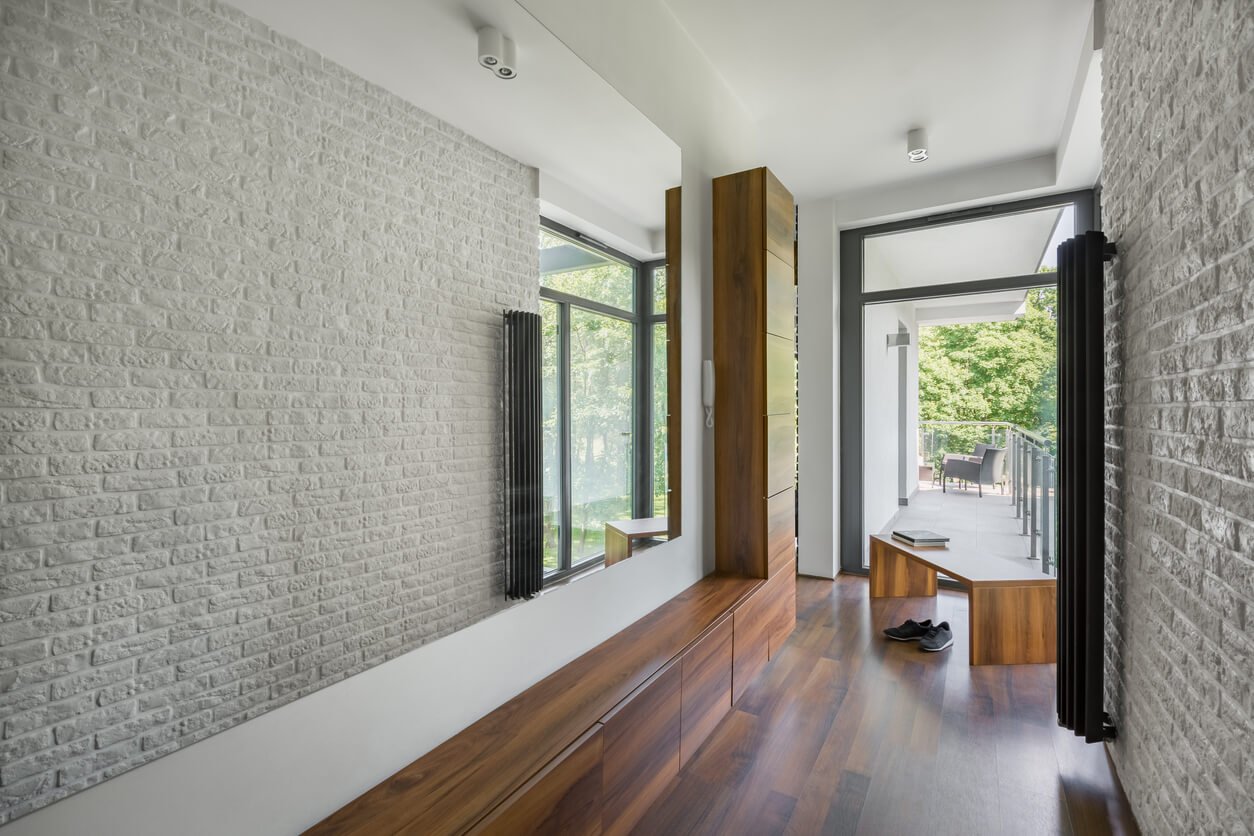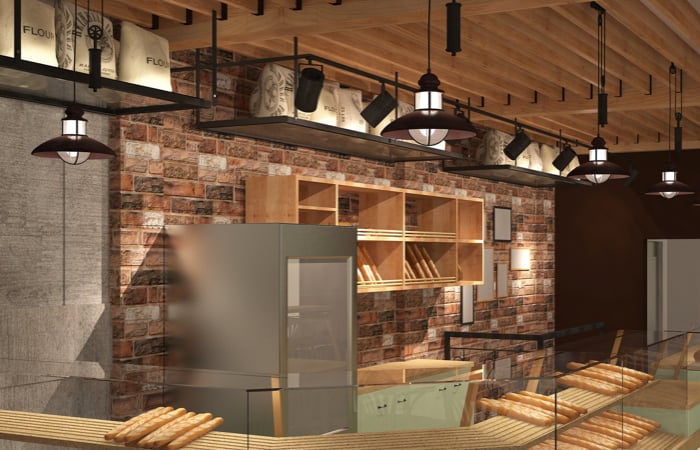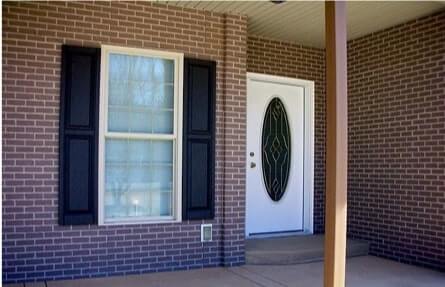
Nothing compares to the look and feel of brick. The stately aesthetic and uniform design creates a classic look that can be easily complemented with modern updates. There’s no debate that brick is timeless, but there is a disagreement when it comes to brick vs. brick veneer.
To find the type of construction that’s best for your home, we’ve outlined the differences between brick and brick veneer. But before we get started, here’s a quick look at some terminology you’ll see throughout this article:
- Veneer is a building and design technique that utilizes non-structural materials to create the look and feel of a structural material, such as brick or stone.
- Masonry refers to the process of building structures.
- Wythe refers to one layer of brick.
Solid Brick
Brick houses are timeless. Made from clay and shale, bricks give a home a uniform look that complements almost every exterior home design. Not only is brick an attractive building material, it’s also an incredibly long-lasting one.
The structural support of many houses comes from solid brick, since it’s such a sturdy construction material. Solid brick homes are typically built using two layers of brick or a concrete block with a layer of brick for the exterior.
You might hear solid brick referred to as “solid masonry construction” or “double brick.”
Cost
Brick is on the more expensive side when it comes to building materials. For just the materials, you could pay between $6.00 and $15.00 per square foot.
And then you need to consider installation — which needs to be done by a professional mason. With product and labor, you’ll likely spend between $14.00 and $30.00 per square foot.
Installation
Can you tell the difference between solid brick and brick veneer? In solid brick construction, there will be header bricks which appear smaller than the others because they are laid sideways with only the short end visible.
Building a home with solid brick is not something that can be done as a DIY project over a weekend. Brick is far too heavy for a novice to handle and requires a very labor-intensive installation process.
Brick also needs to be installed in the beginning stages of the home construction process since it’s an integral part of the structural integrity of a home. To get the job done right (and safely!), you’ll need to hire an experienced mason.
Insulation
If you’re looking for the best insulation, solid brick is not your best option. This is because the best insulation products are made of light, soft materials to promote airflow — also known as things that solid brick is not.
And even though it’s a solid building material, water can seep into the area behind the brick, so it will need a drainage plane or weep holes to help water escape.
Benefits of Solid Brick
- Longevity: There’s a reason why so many old homes were constructed using solid brick. As a building material, brick is fireproof, durable and can withstand environmental conditions like earthquakes or heavy winds.
- Resilience: Brick construction doesn’t require wood, so you won’t have to worry about termites or decay.
- Low-Maintenance: Solid brick is low-maintenance since it has excellent color retention and is long-lasting.
Drawbacks of Solid Brick
- Insulation: As a heavy, solid material, brick is not a good insulator. Utility costs may take a hit because of this.
- Cost: When you factor in the cost of the materials and labor from a mason, brick will cost about 3x more than brick veneer.
Brick Veneer
While solid brick homes are built to structurally support a house, brick veneer relies on the house for reinforcement. The structural support then needs to come from other materials, usually steel and wooden frames. Then brick veneer can be added as siding.
Most houses built in the last 30 years were constructed using brick veneer because of its affordability and ease of installation.
Cost
Brick veneer is a more cost-effective way to get the look and feel of solid brick. On average, you can expect to pay $4.00 to $10.00 per square foot.
Since brick veneer is much easier to install than solid brick, you can also bypass the cost of hiring a mason.
Installation
Solid brick needs to be installed while the house is being constructed, but brick veneer can be added at any point. There’s no need for header bricks, so brick veneer can easily be laid horizontally as a siding.
Since brick veneer requires the structural support of a house, all you need is one wythe to get the look and feel of true brick. This makes the installation process much quicker than building an entire house with a solid brick foundation.
Insulation
Compared to solid brick, brick veneer is a much better insulator. When brick veneer is installed, there will need to be space between it and the exterior walls and then insulation can be added.
Benefits of Brick Veneer
- Flexible, Easy Installation: Brick veneer can be installed at any point after the building is complete.
- Installation: Brick veneer is easier to install than solid brick since it’s only one layer.
- Affordability: Solid brick can cost up to 3x more than brick veneer.
- Insulation: Brick veneer provides much better insulation than solid brick. The air cavities between the brick veneer and exterior of a home will also keep moisture out.
Drawbacks of Brick Veneer
- Single-Layer Design: Brick veneer is thinner than solid brick construction, which means it’s not as durable.
>> Inspiring Designs for Home and Business – See what’s possible with our brick and stone faux wall panels. Download “The Enduring Appeal of Brick & Stone” Lookbook
Solid Brick vs. Brick Veneer Comparison Chart
| Solid Brick | Brick Veneer | |
| Cost | $14.00 – $30.00 per sq. ft. (installed) | $4.00 – $10.00 per sq. ft. |
| Installation | A laborious procedure that requires a mason at the beginning of the construction process. | Can be installed at any point and only requires one wythe. |
| Insulation | Solid building material that doesn’t allow air flow. | More insulation potential and air cavities to keep moisture out. |
Get the High-End Brick Look Without the High Costs
There’s a third option for achieving the look and feel of a brick. Faux brick wall panels are a quick and simple way to add the timelessness of brick to your home.
Faux brick wall panels offer many benefits, including:
- Lightweight and easy to install
- Ideal for indoor or outdoor applications
- Durable and long-lasting
- Available in realistic, custom styles
Texture Plus faux brick wall panels are incredibly realistic and designed to withstand the elements, meaning they can be added to the interior or exterior of your home.
The best part? Installing faux wall panels can be completed as a DIY project! There’s no need to hire a mason — all you need are your faux wall panels, adhesive and screws.
Our faux wall panels are available in over 850 designs. Take a look at your faux brick wall panels options here or contact one of our specialists for assistance.
